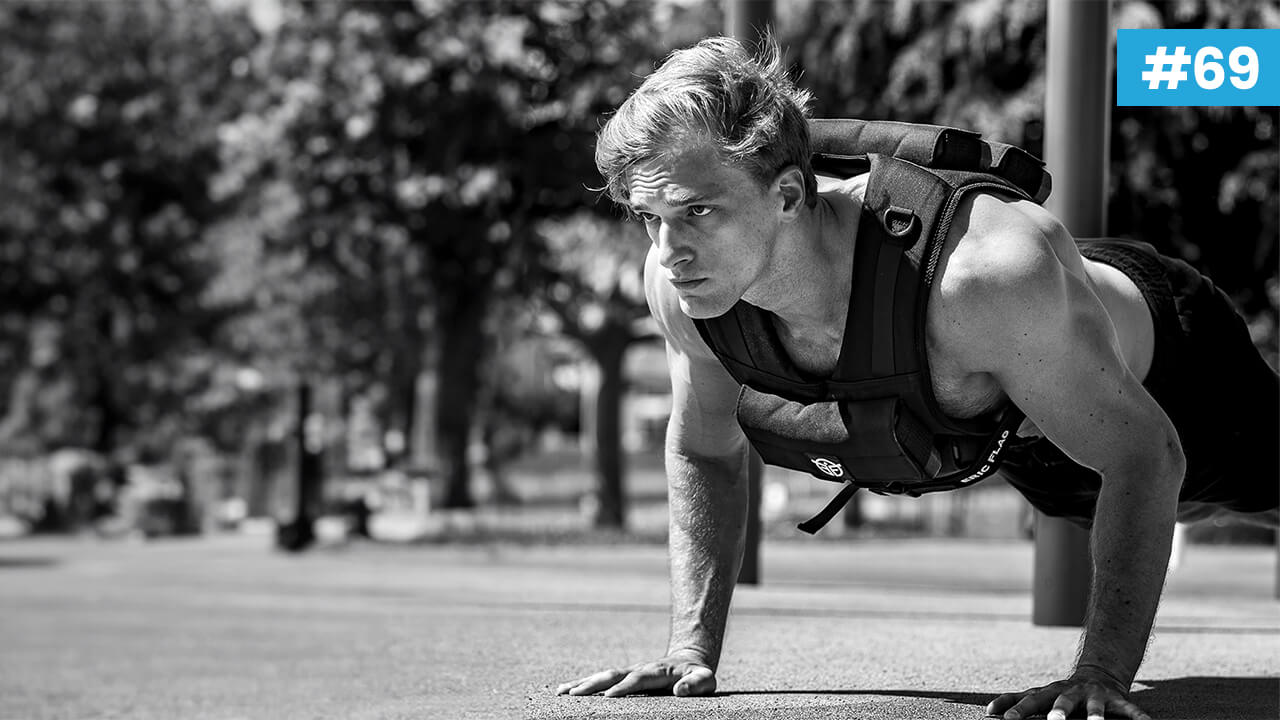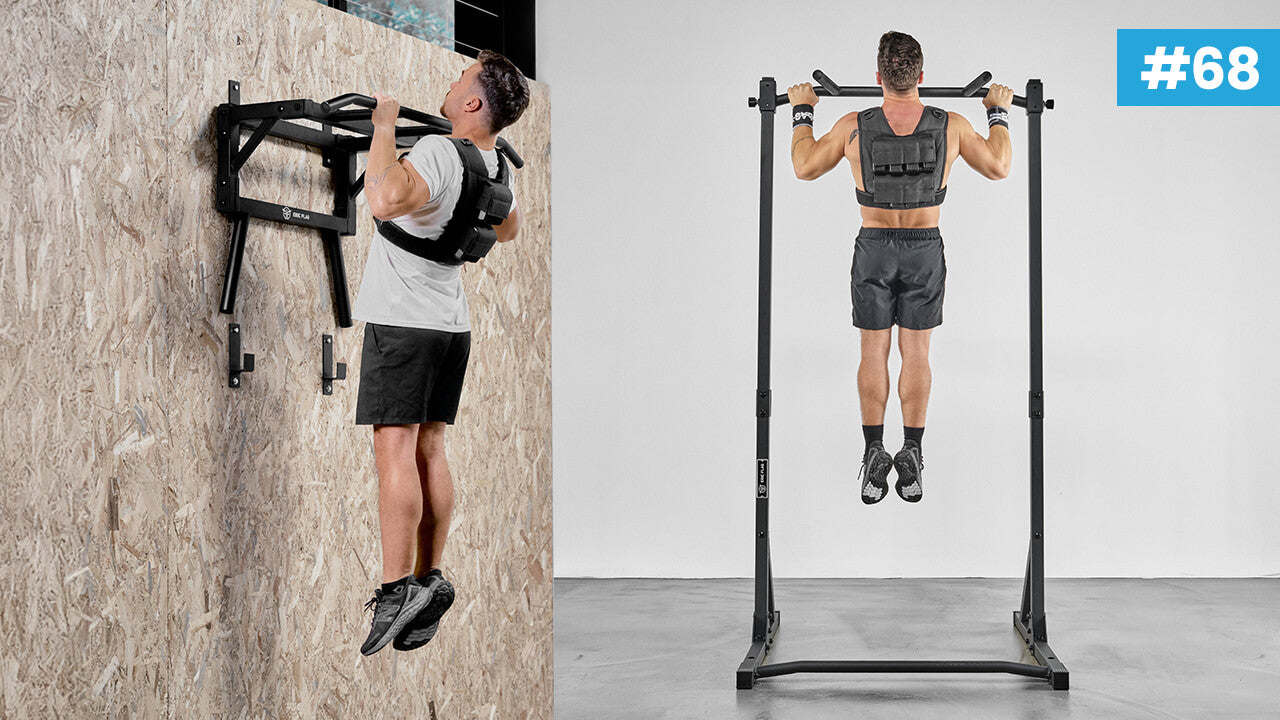Squat Jump: to burn fat and gain explosiveness
The squat jump is an explosive exercise that combines the benefits of the classic squat with the dynamics of a vertical jump. This intense exercise primarily targets the quadriceps and glutes, as well as the hamstrings and calves.
By performing a squat jump, you engage not only your leg muscles but also your abdominal muscles, which are essential for maintaining solid posture and good alignment throughout the exercise.
This exercise is perfect for burning fat and improving your explosiveness. Ideal for HIIT sessions, it adapts to all levels, making your workouts more varied and effective.
Whether you're a beginner or an expert, the squat jump can be easily integrated into your routine to strengthen your muscles and boost your physical performance.
The fat-burning benefits of the squat jump
High intensity for boosted metabolism
The squat jump stands out for its intensity, perfect for boosting your metabolism. Combining a classic squat with a jump intensely engages the legs, glutes and abs, while putting a significant strain on your cardio system.
This explosive movement rapidly raises your heart rate, and increases your caloric expenditure during and after exercise.
The effectiveness of squat jumps in HIIT circuits
Incorporating squat jumps into your HIIT circuits maximizes fat burning and improves your cardio endurance. Alternating squat jump sets with short recoveries keeps your metabolism high for longer.
For example, linking 15 to 20 squat jumps with 10 to 15 seconds rest optimizes fat loss and strengthens your physical condition.
Comparison with other cardio exercises
Compared to burpees, the squat jump specifically targets the lower limbs and cardio. It's an excellent choice for those who want to focus their work on these areas while benefiting from effective fat-burning intensity.
What's more, the squat jump is easy to learn and perform, even for beginners, while offering sufficient intensity to be highly effective.
Improve explosiveness with the squat jump
The role of explosiveness in athletic performance
Explosiveness is essential in many sports, enabling you to generate great force quickly. Whether jumping, accelerating or changing direction, good explosiveness makes all the difference.
In sports such as soccer and basketball, this power can transform an average performance into an exceptional one. The squat jump, by targeting the legs and glutes, significantly improves this explosiveness.
How does the squat jump improve explosive strength?
The squat jump activates the fast muscle fibers essential for explosive movements. Starting from a deep squat and exploding upwards, you intensely engage the quadriceps, glutes and calves.
This movement strengthens your body's ability to generate power quickly, essential for improving your athletic performance.
Practical examples of training to optimize explosiveness
To maximize explosiveness with the squat jump, start with free-body sets to master the movement. Once you're comfortable, add a weight, such as a weighted vest, to intensify the exercise.
Vary the depth of the squat and the height of the jump to work on different ranges of movement.
Techniques and tips for an effective squat jump

The basics of a correct squat jump
Position yourself with feet shoulder-width apart, toes slightly outwards. Keep your back straight, chest open and abs engaged. Squat down until your thighs are parallel to the ground or lower.
Explode upwards by jumping vertically, using the whole foot and keeping the knees in line with the toes. On landing, land softly on the midfoot with knees slightly bent and repeat.
Remember to breathe naturally: exhale as you jump, inhale as you descend.
Common mistakes to avoid
Keep your knees away from your toes to protect your joints. Keep your back aligned and your chest open throughout the movement.
Correctly absorbs landing impact using the heels and midfoot. This reduces pressure on the joints and prevents injury.
Squat jump variations and progressions
To progress, add a load to increase intensity. Try squat jumps with a pause at the bottom to generate more explosive force.
In a nutshell
The squat jump is a versatile and effective exercise that combines the benefits of the classic squat with the intensity of a vertical jump. It strengthens the lower limbs, burns calories efficiently and improves the cardiovascular system.
Incorporate the squat jump into your workout routine to build strength, power and promote fat loss. Start today and enjoy the many benefits of this powerful and versatile exercise.
FAQ
What are the main mistakes to avoid when performing a squat jump?
Common mistakes include: misalignment of knees and toes, slumped posture, lack of explosiveness, excessive flexion of the joints, too rigid a landing, or forgetting to push the hips in at the end of the jump.
Why is it important to warm up before starting squat jumps?
A warm-up prepares your muscles and tendons, loosens up your joints and activates your central nervous system. This prevents injury, improves flexibility and optimizes performance by increasing blood flow to the muscles involved.
How should you land after a jump to minimize the risk of injury?
Land gently on the middle of your foot, bending your knees slightly to absorb the shock. Maintain a stable position to avoid imbalances and reduce the impact on your joints.
Which muscles are mainly involved in performing a squat jump?
The main muscles involved are the quadriceps, glutes, hamstrings, calves and core muscles.






6 Kommentare
With a KettleBell pressed against the torso for 30 to 60-second sets, things heat up very quickly!
Florent
Very well thank you Éric
Mateu
A good mix of cardio, explosiveness and lower-body strength 💪🏼
Thanks for this nice article!
Aurane Claude
Squat jumps are a really important exercise for strengthening the muscles. Be careful, however, not to overdo them, especially for beginners, as the explosiveness and landing to regain the posture can be painful if hard to master.
but top exercise otherwise :)
Xavier BLOUMINE
Thanks, super useful article! When will the pull-up bar that you see in the background come out? :o
Anthony
Undercut exercise, perfect for lower-body explosiveness in superset with Kettlebell Swings for the posterior chain!
Mathieu Sainte colombe
Hinterlasse einen Kommentar
Diese Website ist durch hCaptcha geschützt und es gelten die allgemeinen Geschäftsbedingungen und Datenschutzbestimmungen von hCaptcha.